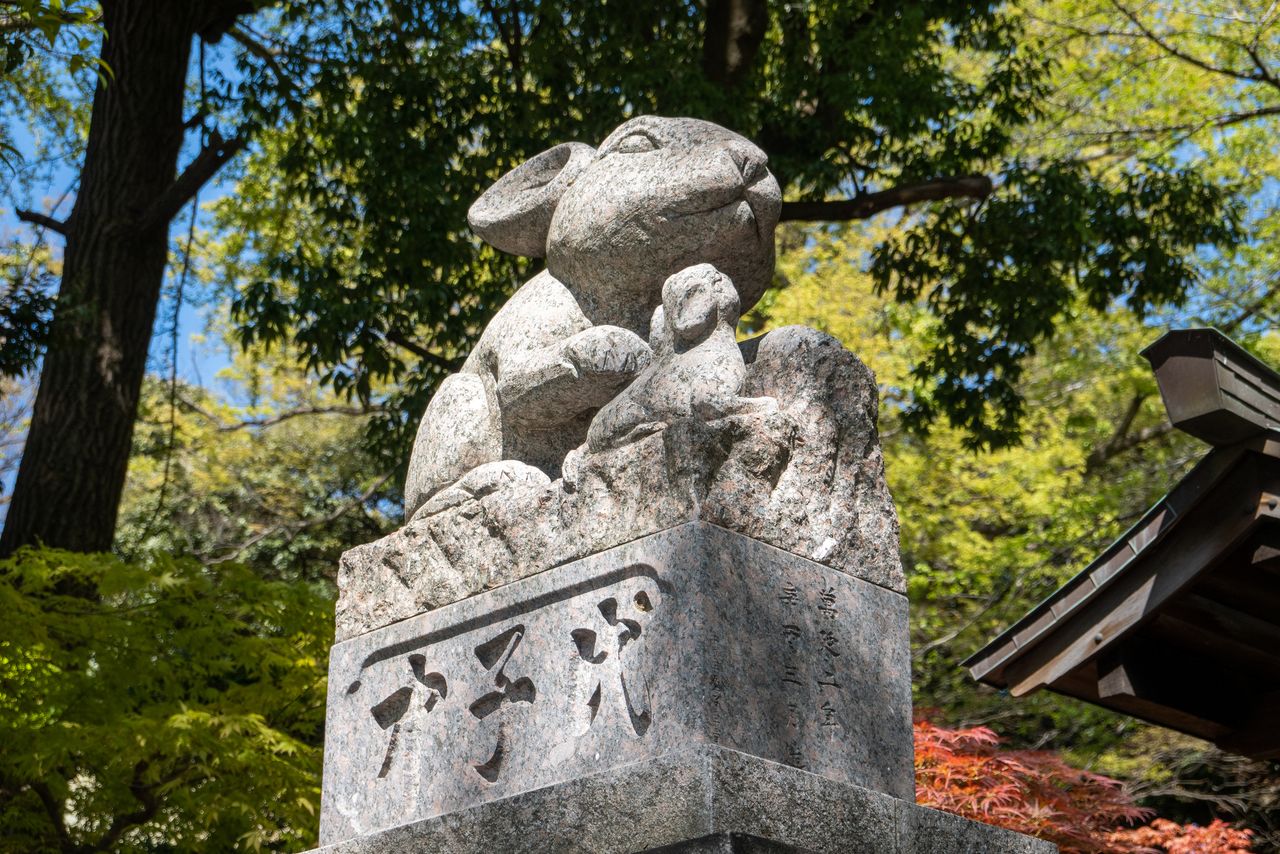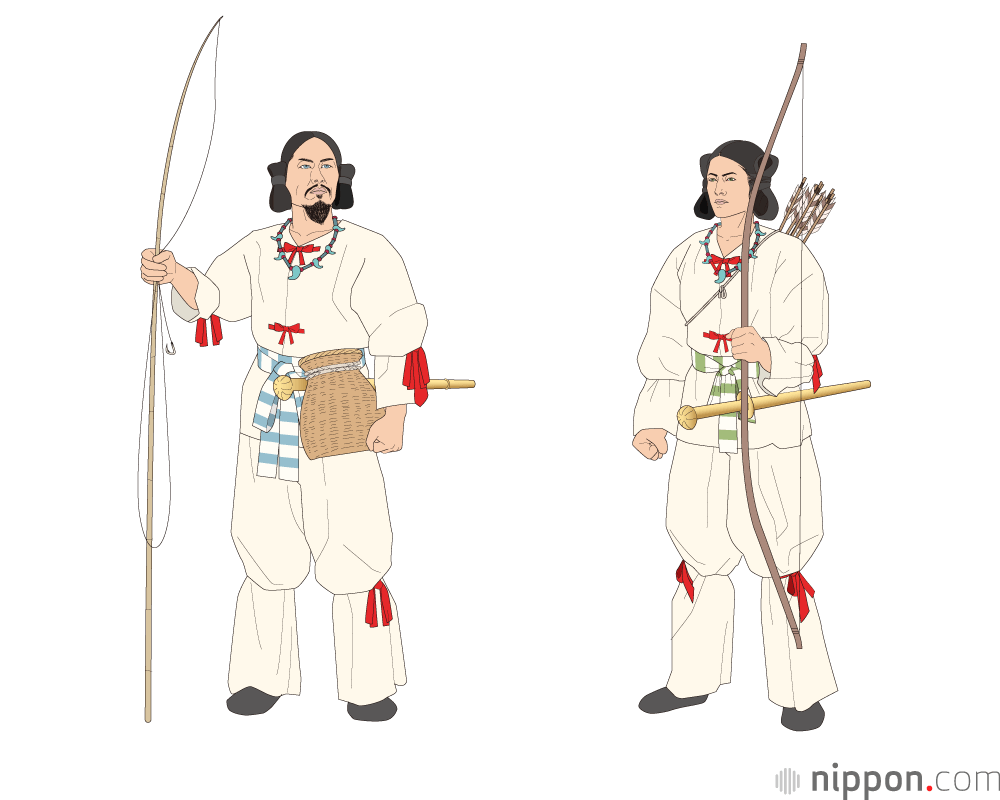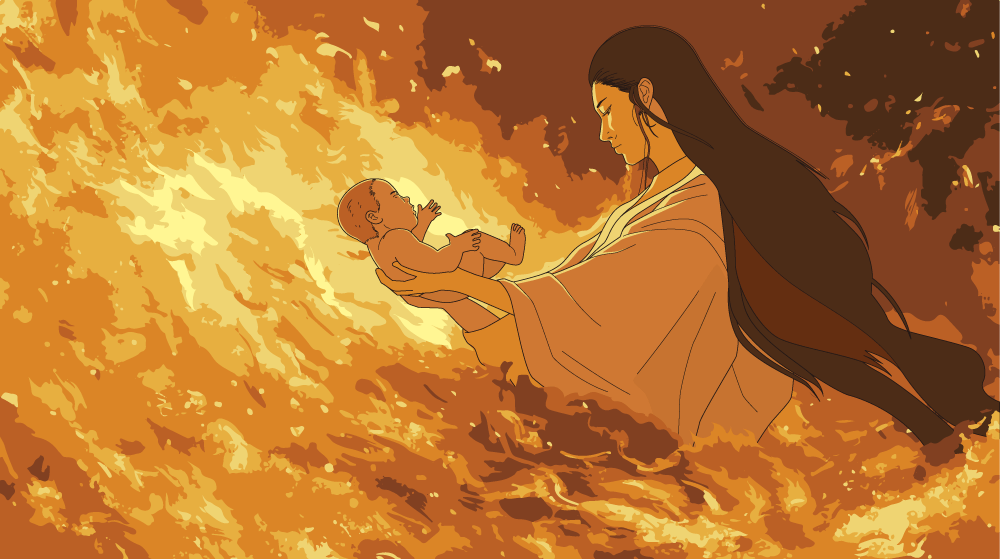
The Gods of Japanese Myths and Legends
“Kami” Questions: Hirafuji Kikuko Shares Her Knowledge About Japanese Gods
Guide to Japan Culture Lifestyle History- English
- 日本語
- 简体字
- 繁體字
- Français
- Español
- العربية
- Русский
Kami Through a Human Lens
INTERVIEWER A huge number and variety of gods make up the Japanese pantheon. Where did this abundance of kami originate from?
HIRAFUJI KIKUKO It’s hard to point to the exact origins of kami that appear in Japanese mythology, but it’s assumed that they developed from ancient forms of nature worship. When rice cultivation and other types of agriculture began in Japan during the Yayoi period [ca. 300 BC–300 AD], people venerated elements of nature like the sun and mountains. These forces were formless at first, and only later were shown as human in appearances. Not until Buddhism began to spread in Japan in the sixth century do we begin to see anthropomorphized depictions of kami, such as paintings and sculptures. In the eighth century, Kojiki and Nihon shoki, along with other chronicles, brought together the various mythological tales, giving form to the Japanese pantheon.
INTERVIEWER It can be tricky to understand how Japanese kami differ from the predominant view of deities as all-powerful, such as the gods of major religions like Christianity. Might Greek mythology provide a better parallel?
HIRAFUJI I would say that Japanese kami and Greek gods are similar in how they possess very human attributes. They are impulsive, commit heinous acts, and quick to fall in love. However, the resemblance to humanity goes much deeper with kami than with the Greek gods, who were notorious for punishing mortals for even the slightest affront to their superiority.
Kami are depicted toiling much as humans—some cultivate rice while others weave. One of the duties of the sun goddess Amaterasu, for instance, is to watch over the looms in the high celestial plain of Takama-no-Hara. Just as people, they are not omniscient but rely on divination and other methods to reveal the unknown. A classic example of this is Amaterasu and her brother Susanoo bearing children from the other’s possessions to determine whether Susanoo was sincere in his assertion that he did not intend to depose his sister as the chief deity in high heaven.
The contest also highlights the human-like nature of kami. Claiming victory, Susanoo goes on one of his characteristic rampages, committing such outrageous acts that Amaterasu hides in a cave to get away from him, which only adds to the calamity by casting the world into darkness. Such behavior is more juvenile than divine, but the two gods eventually grow and mature, becoming more dignified in later mythological stories.
Death of Gods
INTERVIEWER We tend to think of gods as being immortal, but Japanese mythology describes kami being killed or dying. How is that?
HIRAFUJI One interpretation is that it expresses human mortality. The first kami who dies is the female creator deity Izanami—she is burned while giving birth to the fire deity Kagutsuchi. In death, she descends to the land of Yomi. Her husband Izanagi, intent on bringing her back, travels there, but the ploy fails and Izanami remains in the underworld, thus establishing the impermanence of life.
On the whole, tales depicting the death of kami are rare. There is a story of a deity being killed by his own treachery, but gods when killed typically return to life, such as Ōkuninushi, who is murdered by his jealous brothers only to be resurrected by his mother.
INTERVIEWER How did Japanese in the past pay homage to kami?
HIRAFUJI It was considered important to preserve and maintain places where kami were thought to dwell, the legacy of which is still seen today. Allowing a shrine to fall into disrepair or similar neglect could bring harsh consequences. For instance, a story in Kojiki describes a rash of plagues and other calamities befalling the land. People held divinations to discover the cause, which revealed that a kami wanted to be worshipped properly. Once the deity was showed due respect, the turmoil came to an end. In another account, the son of the emperor grows up unable to speak, which is found to be due to a curse by Ōkuninushi. The malady is lifted and the prince can speak when the deity’s shrine in Izumo is restored.
Generalist and Specialist Gods
INTERVIEWER Japan has a host of traditional rites and seasonal celebrations honoring kami. To what degree are these still widely observed?
HIRAFUJI I think it depends on the individual person and community. There are those who value the old customs, while others take a more flexible view in their relationships with the divine. One thing that can be said, though, is that more and more people visit shrines only in the New Year or when at important junctures in their lives.
INTERVIEWER Each kami has its own domain, but, as with Inari and Ebisu both being associated with success in business, these sometimes cross over. Does it matter which kami a person chooses to pray to?
HIRAFUJI This wasn’t as much of an issue in the past as it is today as people typically lived their entire lives in one area and worshipped at the main shrine in their community. Today, though, it’s common to live in one area, but attend school or work somewhere else. In general, people still worship at shrines where they have a connection, either through their family, community, or workplace.
However, the reason a person is visiting a shrine can play a part. Your local shrine will serve for general purposes, but if your aspirations are more specific, like getting into a good school or finding a romantic partner, then visiting a shrine associated with a specific kami is the way to go. It’s not unlike going to the doctor; depending on your need, you may visit your family practitioner or choose to consult a specialist.
INTERVIEWER It’s common for the same kami to be worshipped at different shrines. For instance, Hikawa Shrines, which are associated with Susanoo, are common in the Kantō region, with some communities having more than one. Do deities reside in each place?
HIRAFUJI The name Hikawa is written with the kanji for “river,” and it was common, particularly in the Kantō area, to establish Hikawa Shrines near streams and other bodies of water in the hopes of safeguarding communities from floods or ensuring a rich supply of water for agriculture. Travel was tedious and time-consuming, and as a matter of course, people established branches near where they lived, and over time the number of shrines increased. This was not unique to Hikawa Shrines, of course, but was common for shrines across the country.
As for why there can be multiple shrines dedicated to the same kami, deities are thought to dwell in multiple places. Some may reside in the shrine itself, while others might inhabit a mountain or other aspects of nature. Ise Jingū, for instance, is the central shrine associated with Amaterasu, but there is no shortage of other shrines where the sun goddess is believed to dwell.
Curious Divinities
INTERVIEWER Some shrines have peculiar aspects that make them stand out. The Tsuki Shrine in Saitama Prefecture, for instance, lacks a torii and has stone rabbits as guardians rather than the customary komainu. What might account for such oddities?
HIRAFUJI The shrine is associated with Amaterasu, Susanoo, and the goddess of foodstuffs Toyoukehime. This does not account for the rabbit statues, though. It’s hard to say, but it might relate to tsuki also being the pronunciation of “moon” in Japanese and the folk belief that a hare resides in the celestial body.

A rabbit watches over the entrance to Tsuki Shrine in Urawa Ward of Saitama. (© Pixta)
Rabbits are also considered to be the messengers of the moon god Tsukuyomi. Japanese mythology only mentions the kami in passing and there are just a handful of shrines dedicated to the deity. The important kami Ōkuninushi is also associated with rabbits, in particular the myth of the Hare of Inaba, and there are several statues of the animal on the grounds of Izumo Shrine where the deity is enshrined.
INTERVIEWER Are there any unusual shrines that have caught your attention?
HIRAFUJI If I had to choose, I would say the Ushiodake Shrine in Nichinan in Miyazaki Prefecture. It’s the only shrine in Japan dedicated to Hoderi, a kami associated with fishing and the sea. But what makes it odd is that it’s located in the hills far from the shore. Local legend tells that the deity fled to higher ground after he was defeated by his brother, Hoori. The shrine building is rather small but well-maintained, illustrating how the kami is held in high regard.

Hoderi and Hoori. (© Satō Tadashi)
The Story of Hoderi and Hoori
When the god Ninigi, grandson of Amaterasu, descended from Takama-no-Hara to rule over Japan, he fell in love with and married the beautiful blossom goddess Konohanasakuyahime. Among the couple’s children were two sons, Hoderi (Umisachihiko), who brings the bounty of the sea, and Hoori (Yamasachihiko), who brings the bounty of the mountains. One day, Hoori suggests that the brothers exchange tools, to which Hoderi reluctantly agrees. Hoori soon loses his brother’s fishing hook, angering Hoderi, who commands his younger brother to scour the sea for the precious item. During his search, Hoori falls in love with the daughter of the sea god and takes her as his wife. After three years under the waves, he is helped by the sea god in his search for the lost hook, which he discovers in the belly of a fish. He returns the hook in triumph, but Hoderi refuses to forgive his brother. The two come to blows, with Hoori besting Hoderi.
Spirits of Small Things
INTERVIEWER Folktales tell of tsukumogami, tools and other objects that acquire a spirit after a number of years have passed. They are called kami, although they seem closer to yōkai in nature.
HIRAFUJI I think they are a wonderful illustration of the flexible view of kami. An item becomes a tsukumogami after a hundred years, and depending on how it has been treated, it might transform into a malicious yōkai or a benevolent spirit. Similarly, there are tales of animals and even people becoming kami.
Far from being feared, kami can be beneficial, so long as they are treated with respect. Take binbōgami, a folk deity associated with misery and poverty that when dealt with appropriately can actually bring fortune and happiness.
INTERVIEWER With so many types of deities, would you say a person’s relationship to kami comes down to the individual?
HIRAFUJI Yes, I think the Japanese approach to kami is quite malleable. Take electronic devices, for instance. They’re not something traditionally associated with shrines, but as they’ve become such an integral part of our lives, some shrines now conduct purification rites for smartphones, tablets, and the like. Take Tokyo’s famous Kanda Shrine, which has added IT to its domain by offering parishioners protective amulets to ward off computer viruses and other malicious digital attacks. Such flexibility allows shrines to adapt to the changing spiritual needs of society.

A Shintō priest at Kanda Shrine, which is associated with prosperity in business, blesses worshippers returning to work in the New Year on January 4, 2024. (© Jiji)
Divine Favorites
INTERVIEWER Are there any kami that you are particularly fond of or think deserve more attention?
HIRAFUJI Personally, I’m a big fan of the blossom princess Konohanasakuyahime. I love her tremendous willpower. (See story below.―Ed.) As a fire deity, she is worshipped at Asama (Sengen) Shrines associated with Mount Fuji. She is also the goddess of sake, with legend attributing the brewing process to her. It’d be fun to chat with her over a drink or two as I imagine she has some stories to tell.
The Story of Ninigi and Konohanasakuyahime
Ninigi, the grandson of Amaterasu who was sent by the sun goddess to rule over Japan, falls in love with the beautiful princess Konohanasakuyahime and asks her father, the mountain god Ōyamatsumi, for her hand. Ōyamatsumi offers the god her sister Iwanagahime as well, hoping that the marriage would ensure that his line would flourish like cherry blossoms in full bloom and be as eternal as the stones. Ninigi, however, sends the older sister back to her father, comparing her features to the craggy surface of a rock. This impertinence is said to be why emperors, despite being descendants of heavenly divinities, have normal lifespans.
Ninigi and Konohanasakuyahime wed, and on the couple’s first night together, the princess becomes pregnant. Ninigi, doubting that such a thing is possible, accuses his bride of adultery. Incensed, Konohanasakuyahime to prove her fidelity sets fire to her palace and gives birth amid the flames, bringing forth her sons Hoderi, Hosuseri, and Hoori, whom she nurses by brewing amazake (a drink made from fermented rice).
INTERVIEWER Most young people describe themselves as nonreligious, but does this mean they are uninterested in kami altogether? Are there any Japanese deities that appeal to the younger generations?
HIRAFUJI There are several female students at the university where I teach who are researching Takemikazuchi, the Japanese god of swords enshrined at Kashima Shrine in Ibaraki Prefecture. Their interest stems from playing the video game Tōken Ranbu in which players collect cards featuring famous Japanese swords depicted as handsome young men. I find it interesting how the game borrows from the idea of objects being endowed with spirits, which as I mentioned earlier is a view deeply rooted in Japanese culture.
Global Appeal
INTERVIEWER Shintō is distinct to the Japanese way of life, but there are a number of foreigners whose interest in the country has inspired them to become Shintō priests. How might Japanese kami appeal to people who didn’t grow up in the culture?
HIRAFUJI It seems to me that the draw for foreigners isn’t Japanese kami themselves, but more the traditional approach to nature, such as showing respect to the mountains, rivers, and other aspects of the natural environment. This view blends nicely with the modern ecological movement.
The idea of giving thanks to the abundance provided by nature has roots running back to ancient times in Japan, and some foreigners who come from monotheistic backgrounds might be drawn to this aspect.
It’s important to keep in mind that people forge their own relationships with the divine, and not everyone in Japan views kami in the same way. Still, I feel that when confronted by an old tree or craggy boulder marked with a shimenawa [sacred rope] that most people, whatever their religious leanings, will feel the urge to put their hands together in respect for whatever spirit might reside there.
(Originally published in Japanese. Interview by James Singleton and written by Kimie Itakura of Nippon com. Banner image: © Satō Tadashi.)
Related Tags
Buddhism Shrines and Temples kami myth Amaterasu legends Shinto


